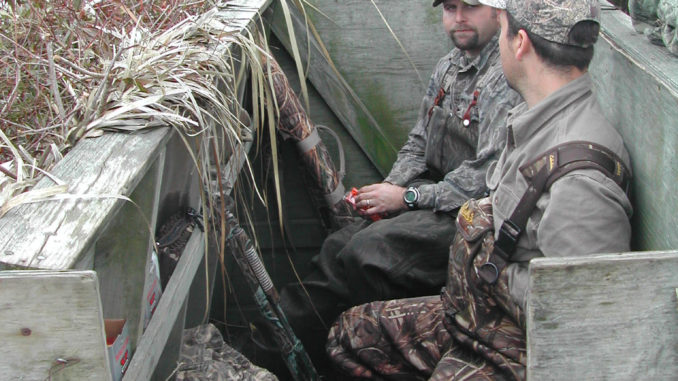
Even though a few webbed migrants have arrived in the Carolinas’ swamps and marshes, the slug of migratory ducks are yet to arrive. The remainder of the 60-day season is well within the sights of expectant duck blasters in the state. With cooling temperatures expected to arrive this month, the restoration of dilapidated duck blinds will come more easily with most of the slithering creatures heading for hibernation.
The craftsmanship of most duck blinds would probably send Phil Robertson and his crew back to Louisiana, but a trip to the hardware store for a pound of galvanized nails and a stack of treated lumber will make even the ugliest of duck blinds hold up for another winter duck season.
A makeover on the exterior with fresh pine saplings, wax myrtle, and palmetto fronds will add that extra concealment when a flock of pintails approaches at the crack of dawn. While not absolutely necessary, native vegetation found in the vicinity of the blind will provide the best camouflage, but, any cover is better than no cover at all. Choose woody evergreen plants such as wax myrtle, red cedar and pine, or use tough, shrubby materials, such as giant cane or large gallberry cuttings.
October will arrive right in time to get the blind ready for the approaching season.




Be the first to comment